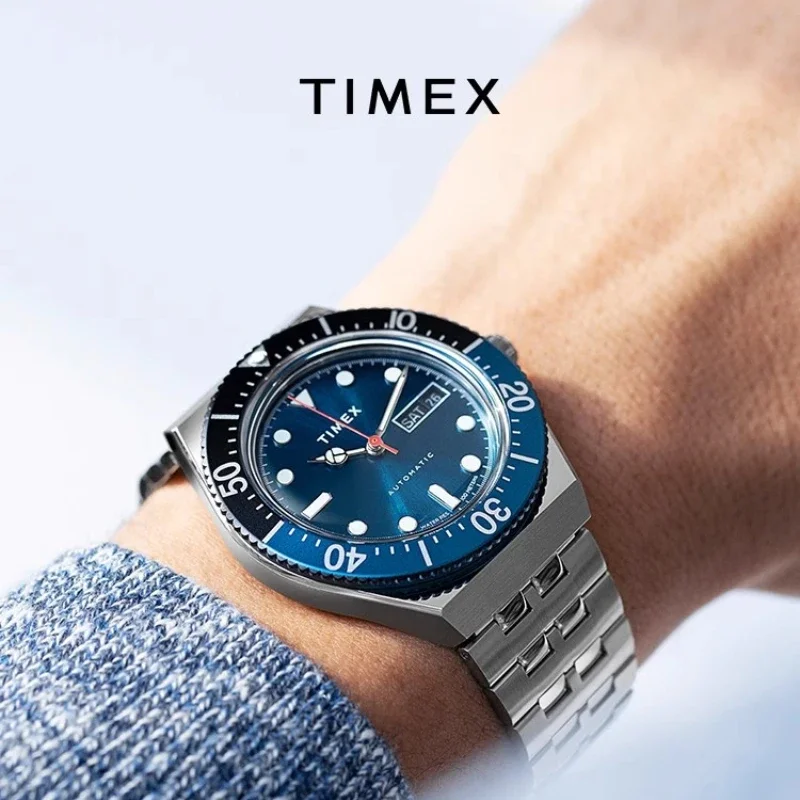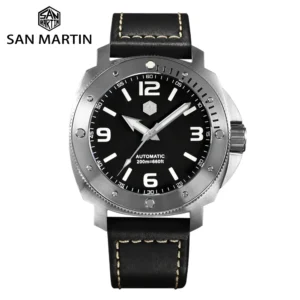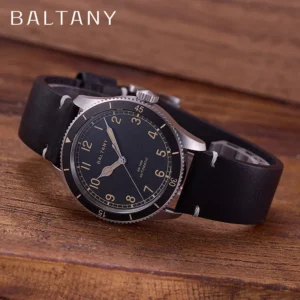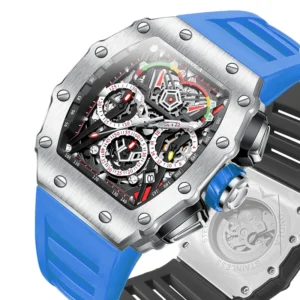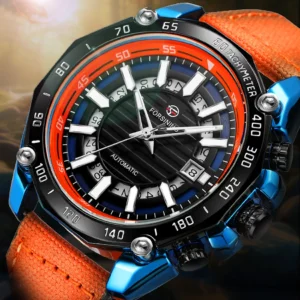1. Introduction: How War Transformed Timekeeping Forever
The thunderous chaos of artillery fire and the urgent commands of officers shouting across muddy trenches demanded a revolution in timekeeping. Before World War I, the pocket watch reigned supreme as the gentleman’s timepiece of choice. However, the brutal realities of trench warfare quickly exposed its limitations. Soldiers couldn’t fumble with pocket watches while handling weapons, coordinating attacks, or responding to enemy fire.
This military necessity sparked one of the most significant transformations in horological history: the evolution from pocket watches to wrist-worn timepieces. The trench watch emerged as an ingenious solution, bridging the gap between traditional pocket timepieces and the robust field watches that would follow. These battlefield innovations didn’t just change military timekeeping—they permanently altered how the entire world tracked time.
What began as a tactical adaptation would eventually influence civilian fashion and horological design for generations to come. The evolution of military field watches represents not just a change in where timepieces were worn, but a complete rethinking of how watches should function under the most extreme conditions imaginable.
2. The Pre-Wristwatch Era: Pocket Watches on the Battlefield
Before World War I, pocket watches were the standard timepieces for men in both civilian and military settings. These traditional timepieces, while elegant and reliable in everyday life, proved woefully inadequate for the demands of modern warfare. Soldiers facing the horrors of combat quickly discovered the limitations of these devices.
Imagine a soldier crouched in a muddy trench, rifle in one hand, trying to extract a pocket watch from a uniform pocket with the other—all while explosions erupted nearby. This two-handed operation was not merely inconvenient; it was potentially fatal. The precious seconds spent retrieving a watch from a pocket could mean the difference between life and death.
Beyond the impracticality of access, pocket watches were extraordinarily vulnerable to battlefield conditions. Their delicate mechanisms suffered from moisture, dirt, and impact damage. Most critically, the synchronized timing of military operations—where attacks had to be coordinated down to the second across vast distances—demanded a more accessible timekeeping solution.
These battlefield challenges created the urgent need for innovation that would eventually lead to purpose-built military wristwatches. The complete history of field watches in military service shows how dramatically timekeeping adapted to the changing face of warfare.
3. The Birth of Trench Watches: Form Follows Function
The trench watch was born from pure necessity on the battlefields of World War I. These early wristwatches weren’t designed from scratch but rather represented clever adaptations of existing pocket watches. Soldiers and watchmakers improvised by soldering wire lugs onto pocket watch cases, creating attachment points for leather straps that allowed the watch to be secured to the wrist.
These makeshift creations quickly caught the attention of watch manufacturers, who began producing purpose-built versions to meet military demand. A true trench watch combined elements of pocket watch design with new features specifically addressing battlefield needs.
What defined a trench watch was its transitional nature—not quite a pocket watch, not yet a modern wristwatch. Key characteristics included:
- Oversized cases (often 35-40mm) derived from small pocket watches
- Wire lugs soldered to the case for strap attachment
- Large Arabic numerals coated with luminous material for nighttime visibility
- Protective metal grilles (shrapnel guards) covering the crystal
- Modified crowns designed for easier manipulation while wearing gloves
- Converted pocket watch movements housed in more robust cases
These watches weren’t just timekeeping tools; they were survival equipment. Their development demonstrated how military necessity forged the modern field watch through practical innovations born directly from battlefield experience.
4. Key Design Elements of Trench Watches
Trench watches featured distinct design elements that directly addressed battlefield challenges:
Enhanced Legibility: Large Arabic numerals dominated the dial, making time-reading instantaneous even in poor conditions. Radium paint (later discovered to be dangerously radioactive) provided luminosity in darkness, allowing officers to coordinate nighttime operations without revealing their position with lights.
Protective Features: Metal “shrapnel guards” or “cage covers” protected the crystal from impacts while still allowing time visibility. These grille-like structures became one of the most distinctive visual features of trench watches.
Crown Design: Oversized crowns enabled soldiers to wind and set their watches while wearing gloves in cold, wet conditions—a seemingly small detail that made an enormous difference in functionality.
Transitional Case Design: While adopting the wrist-worn format, many trench watches retained the circular cases and hinged backs of pocket watches, revealing their evolutionary origin.
Materials: Typically featuring sterling silver, nickel, or early stainless steel cases, trench watches prioritized corrosion resistance and durability over precious metals.
Movement Protection: Basic moisture and dust resistance features began appearing, though nothing approaching modern water-resistance standards. The mastering of case protection in tactical timepieces would continue evolving for decades to come.
These design elements represented the first attempts to adapt timepieces specifically for combat conditions—solving immediate problems while setting the foundation for future innovations.
5. The Interwar Period: Refining the Military Timepiece
The period between World War I and World War II marked a crucial developmental phase for military watches. The lessons learned from trench warfare drove significant advancements in wristwatch design, transitioning from improvised solutions to purpose-engineered instruments.
Watch manufacturers applied combat feedback to improve durability and functionality. Case designs evolved from the circular pocket watch style to shapes better suited for wrist wear. The vulnerable wire lugs of trench watches gave way to stronger, integrated lug designs that provided better stability and protection against snagging.
Water resistance technology made significant strides during this period, with improved case sealing techniques and the development of screw-down crowns. Early shock protection systems emerged to safeguard delicate movements from the impacts common in military service.
Perhaps most significantly, the interwar period saw the beginning of standardization efforts. Military forces began establishing specific criteria for timepieces, laying groundwork for the formal specifications that would define WWII field watches. Meanwhile, civilian adoption of wristwatches accelerated dramatically, partly influenced by returning soldiers who had grown accustomed to the practicality of wrist-worn timepieces in battle.
This period represented a critical evolutionary link—watches were no longer adapted pocket watches but were being designed specifically for the wrist, with military requirements driving innovations that would benefit all timepieces.
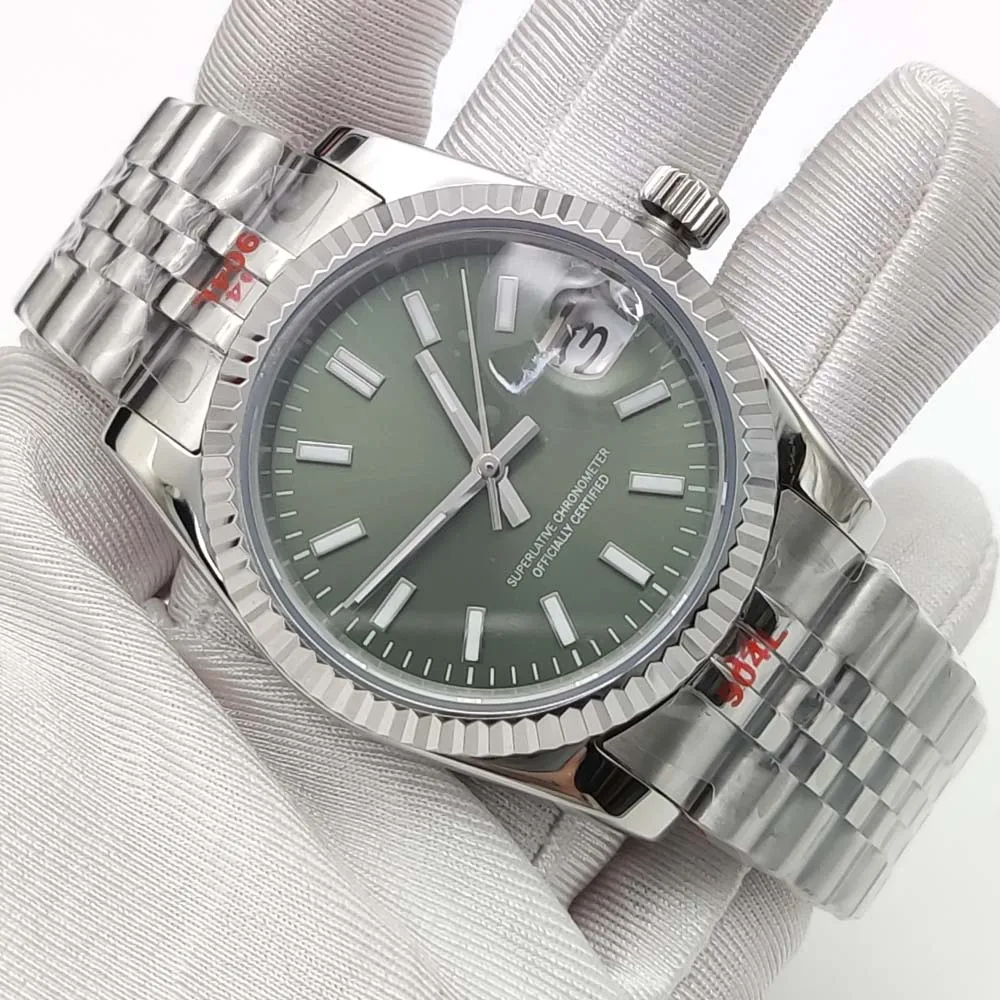
6. World War II and the Birth of the Modern Field Watch
World War II introduced a dramatically different style of combat than its predecessor—faster, more mobile, and even more dependent on precise coordination. These new battlefield realities demanded a new generation of military timepieces.
Unlike the ad hoc adaptations of WWI, WWII watches emerged from rigorous military specifications that standardized design, functionality, and production. The American A-11 specification became particularly influential, resulting in timepieces produced by manufacturers like Elgin, Waltham, and Bulova that were so crucial to military operations they earned the nickname “the watch that won the war.”
In Britain, the “Dirty Dozen”—twelve watch companies commissioned to produce the W.W.W. (Watch, Wristlet, Waterproof) timepiece—created another iconic field watch design. These watches featured:
- Highly legible black dials with white Arabic numerals
- Luminous hands and hour markers
- Robust 36-38mm case sizes
- Dust and moisture resistance
- Sturdy fixed lugs with spring bars
- Accurate and reliable manual-wind movements
These field watches represented a mature wristwatch design philosophy rather than the transitional forms of trench watches. Mass production techniques allowed these watches to be manufactured in unprecedented numbers, equipping millions of service members with reliable timekeeping tools.
The development of military watch styles across decades shows how these WWII designs established the template for what we now recognize as the classic field watch—a template that remains influential today.
7. Key Design Elements of Field Watches
Field watches refined the military timepiece concept with standardized design elements focused on ultimate reliability:
Maximum Legibility: High-contrast black dials with white markings became standard, along with properly proportioned minute tracks and balanced layouts. Every element served the singular purpose of instant time recognition under stress.
Robust Construction: Cases made from corrosion-resistant stainless steel provided superior protection against the elements. Crystals were typically made from hardened mineral glass or acrylic that wouldn’t shatter into dangerous shards if broken.
Accuracy Requirements: Military specifications demanded precision far beyond civilian standards. Watches underwent rigorous testing for accuracy in various positions and temperatures before being approved for service.
Hacking Seconds Feature: This crucial innovation allowed the second hand to be stopped when the crown was pulled out, enabling precise synchronization among units—critical for coordinated operations where seconds mattered.
Specialized Straps: Canvas and one-piece leather straps provided secure attachment in all conditions while allowing quick removal if the watch became caught on equipment.
Anti-Magnetic Protection: As military equipment became increasingly electronic, watches incorporated soft iron inner cases to shield movements from harmful magnetic fields.
Today’s automatic field and military watches continue this tradition of rugged functionality while incorporating modern materials and movements.
8. Trench Watch vs. Field Watch: A Direct Comparison
To understand the evolution from trench watches to field watches, a direct comparison reveals how military needs shaped horological development:
| Feature | Trench Watch | Field Watch |
|---|---|---|
| Era | World War I (1914-1918) | World War II (1939-1945) and beyond |
| Design Origin | Adapted pocket watches | Purpose-built wristwatch |
| Case Material | Sterling silver, nickel | Stainless steel, base metals |
| Case Design | Circular with soldered wire lugs | Integrated lugs with spring bars |
| Crystal Protection | External shrapnel guards/cages | Improved crystal materials |
| Water Resistance | Minimal to none | Basic moisture/dust resistance |
| Luminosity | Radium paint (hazardous) | Safer luminous compounds |
| Standardization | Limited, various designs | Strict military specifications |
| Movement | Modified pocket watch movements | Purpose-built wristwatch calibers |
| Strap Attachment | Wired lugs with sewn leather straps | Spring bars with interchangeable straps |
| Synchronization | Limited features | Hacking seconds for precise timing |
| Deployment | Officer-focused | Mass-issued to all ranks |
This evolution reflects not just technological advancement but a fundamental shift in military strategy. While trench watches represented an improvisational response to static trench warfare, field watches were engineered tools for the highly mobile, synchronized operations of modern combat.
The military-inspired automatic watches available today continue to reference design elements from both eras while incorporating contemporary technology.
9. Technological Innovations That Defined the Transition
Several key technological developments marked the transition from trench watches to modern field watches:
Water resistance technology made tremendous strides, evolving from the basic dust covers of early trench watches to the compressed gasket systems of WWII timepieces. While not suitable for diving, these improvements protected movements from the rain, mud, and humidity that had destroyed countless watches in WWI.
Case construction techniques advanced significantly with the development of one-piece and screw-back designs that provided superior sealing compared to the hinged covers of adapted pocket watches. The introduction of stainless steel cases in the 1930s offered unprecedented corrosion resistance for military timepieces.
Luminous technology evolved from the dangerously radioactive radium compounds of early trench watches to safer (though still radioactive) tritium-based paints by WWII, improving safety while maintaining crucial nighttime visibility.
Movement technology progressed with the introduction of shock protection systems like Incabloc, which helped protect the delicate balance wheel from impacts. Specialized military calibers featured improved anti-magnetism and more reliable mainspring designs.
Manufacturing precision increased dramatically through new production methods, allowing for better water resistance, more reliable parts, and the mass production capabilities needed to supply millions of service members with standardized timepieces.
These technological leaps explain why field watches proved vastly more capable and reliable than their trench watch predecessors in battlefield conditions.

10. Why Field Watches Succeeded Where Trench Watches Began
Field watches represented a comprehensive solution to the problems that trench watches had only partially addressed. Their success stemmed from several critical advantages:
The mobile warfare of WWII demanded timepieces that could withstand rapid deployment across diverse environments—from North African deserts to Pacific jungles to European winters. Field watches, with their improved sealing and materials, proved remarkably adaptable to these varied conditions.
Standardization brought enormous benefits to military operations. With consistent designs, soldiers could be trained on a single watch type, maintenance became streamlined, and replacement parts could be standardized. This consistency was impossible with the varied, often improvised trench watches of WWI.
Integration with other equipment improved significantly. Field watches were designed with consideration for how they would interact with uniforms, webbing, and other gear. Low-profile designs prevented snagging, while secure strap attachments ensured watches stayed in place during physical activity.
Reliability in extreme conditions marked perhaps the most significant advancement. Field watches could withstand temperature fluctuations, moisture, dust, and impact that would have rendered trench watches inoperable. This reliability meant field watch functionality in combat zones could be taken for granted—a luxury unimaginable to WWI soldiers constantly worried about their timepieces failing at critical moments.
11. The Enduring Legacy: Field Watches in Modern Times
The field watch design has demonstrated remarkable staying power, transitioning from military tool to civilian classic with its fundamental design language intact. This endurance speaks to the inherent correctness of its form-follows-function approach.
Modern watch brands continue to draw inspiration from these military designs, recognizing their perfect balance of legibility, durability, and understated elegance. The clean dial layouts, robust construction, and versatile styling make field watches appropriate for everything from outdoor adventures to business casual settings.
What makes these designs timeless is their honest purposefulness. Every element serves a functional role—there’s nothing superfluous or decorative. This design integrity resonates with contemporary consumers seeking authentic products with genuine heritage rather than merely fashionable accessories.
The military pedigree of field watches carries cultural significance beyond their physical attributes. These timepieces connect wearers to important historical narratives and values of durability, reliability, and precision—qualities as appealing today as they were on the battlefield.
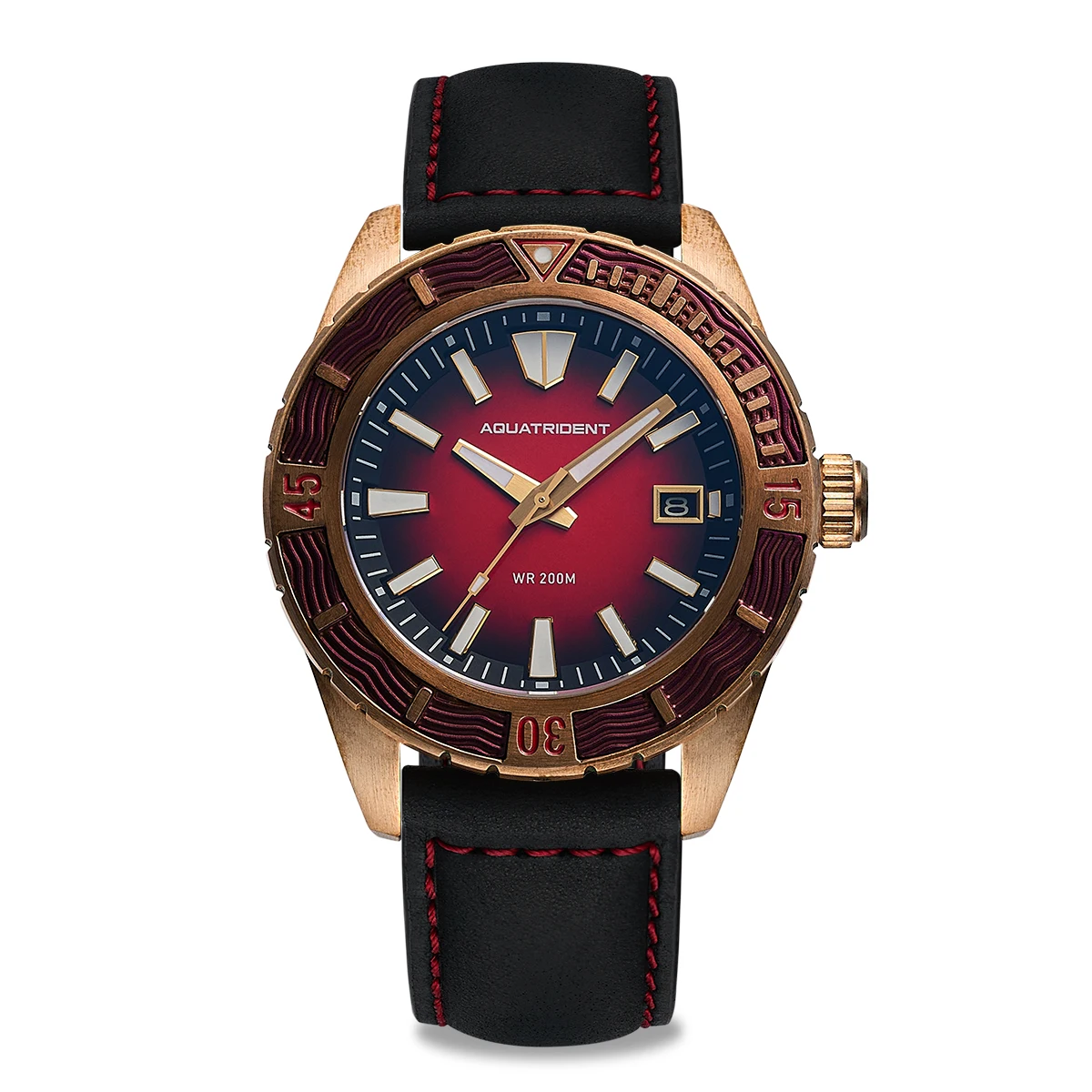
The popularity of bronze automatic watches with field watch styling demonstrates how manufacturers continue finding ways to refresh this classic design while honoring its military heritage.
Military Inspired Automatic Watches, Rugged Automatic Watches, Tactical Automatic Watches
Price range: $852.14 through $994.60 Select options This product has multiple variants. The options may be chosen on the product pageBronze Automatic Watches, Military Inspired Automatic Watches, Professional Spec Dive Watches
Price range: $1,442.21 through $1,442.82 Select options This product has multiple variants. The options may be chosen on the product pageClassic Pilot Watches, Military Inspired Automatic Watches
$561.00 Select options This product has multiple variants. The options may be chosen on the product pageRugged Automatic Watches, Unique Automatic Watches
Price range: $228.96 through $231.10 Select options This product has multiple variants. The options may be chosen on the product pageClassic Field Watches, Military Inspired Automatic Watches
Price range: $280.87 through $338.51 Select options This product has multiple variants. The options may be chosen on the product pageAutomatic Skeleton Watches, Military Inspired Automatic Watches, Unique Automatic Watches
$191.88 Select options This product has multiple variants. The options may be chosen on the product page
12. Collecting Vintage Military Watches: Trench vs. Field
For collectors interested in military timepieces, trench watches and field watches present distinctly different opportunities and challenges:
Trench watches, being rarer and often handcrafted adaptations, typically command higher prices when authentic. Their scarcity stems from both limited original production and high casualty rates among the pieces that saw actual combat service. By contrast, field watches were mass-produced by the millions, making authentic examples more accessible to collectors.
Authentication presents unique challenges for each type. Trench watches often lack standardized markings, making verification difficult—experts must evaluate case construction, movement type, and period-correct modifications. Field watches, with their military markings and standardized designs, are easier to authenticate but are frequently counterfeited due to their collectibility.
Common condition issues differ significantly between the types. Trench watches frequently suffer from case repairs, dial restorations, and replaced crystals. Their movements often show extensive wear or inappropriate replacement parts. Field watches typically exhibit worn cases from service use but often contain surprisingly well-preserved movements due to their superior sealing.
For collectors beginning their journey into military timepieces, rugged automatic watches with heritage designs offer the historical connection without the concerns of vintage watch maintenance.
13. Are Field Watches Still Relevant in the Digital Age?
In an era dominated by smartwatches and digital technology, do mechanical field watches still serve a purpose?
Q: Can’t smartwatches do everything a field watch does and more?
A: While smartwatches offer additional functionality, they introduce vulnerabilities that field watches avoid. Most notably, battery dependency means smartwatches will fail without regular charging—a serious limitation in remote areas or emergency situations. Mechanical field watches can run indefinitely with just the energy from the wearer’s movement or manual winding.
Q: What practical advantages do field watches offer today?
A: Field watches provide exceptional reliability in environments where electronics might fail—extreme temperatures, high humidity, and electromagnetic interference areas. Their simple, mechanical operation means fewer potential failure points in critical situations.
Q: Beyond practical aspects, why do people still choose field watches?
A: Many wearers appreciate the connection to horological heritage and the craftsmanship represented by mechanical movements. There’s something meaningful about wearing a timepiece design that has proven itself over decades of use under the most demanding conditions.
The ongoing timeline of tactical field watch innovation shows these timepieces continue evolving to meet contemporary needs while maintaining their core principles of reliability, legibility, and durability.
14. Conclusion: The Military Timepiece Journey
The evolution from trench watches to field watches represents one of the most significant developments in horological history—a transformation driven not by fashion or marketing but by the unforgiving demands of combat. What began as a practical adaptation to the horrific conditions of trench warfare matured into a purpose-built instrument that helped coordinate the most complex military operations in history.
This journey exemplifies how necessity drives innovation. Every feature we now take for granted in wristwatches—from water resistance to shock protection, from luminous dials to durable straps—was refined through battlefield testing where failure could mean life or death.
Today’s appreciation for field watch aesthetics isn’t merely nostalgia; it’s recognition of design perfection achieved through functional necessity. When form truly follows function, the result is timelessly appealing. The humble military field watch, born from conflict, continues to influence how we think about what makes a watch not just good, but genuinely great.

